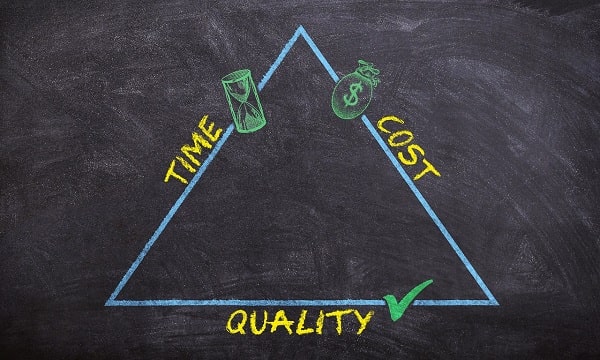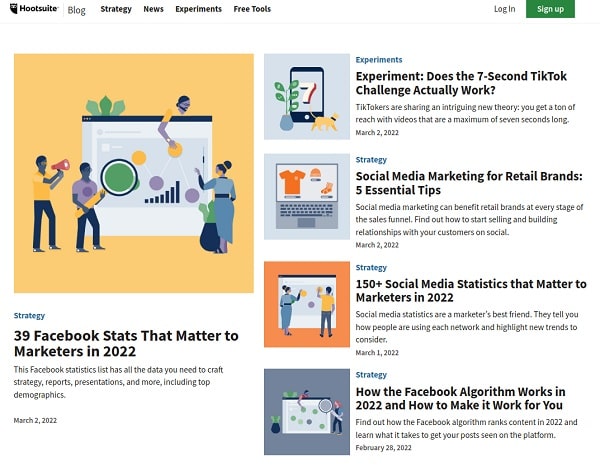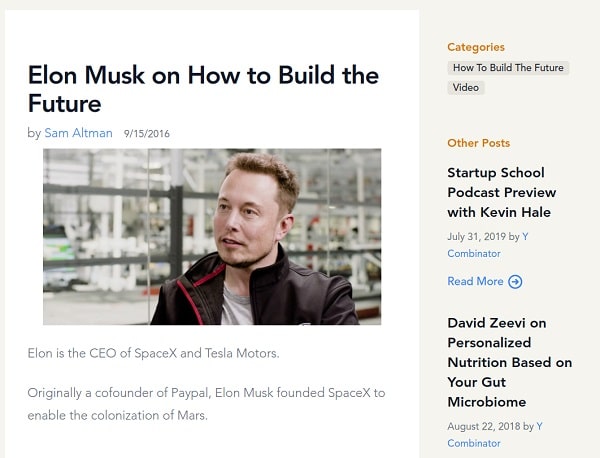Change is the one constant in the world of marketing and sales, and the one element that changes the most as time passes by is buyer behavior.
However, things are a bit different in the world of B2B marketing. Companies can’t change that quickly, and it usually takes a lot of time and resources to refresh a brand’s approach.
Still, the decision-makers behind the brand do change, and this is an aspect you have to consider in your outreach campaigns.
Plus, things are different from one outreach channel to another. So you need to change the approach depending on the channel. That’s why B2B outreach on LinkedIn is different from B2B outreach on Facebook or Instagram (or email, for that matter).
At a glance, the most challenging part of a B2B outreach campaign is breaking through the noise and getting the attention of decision-makers. That’s because you have to adapt the strategy to the channel you’re using but also make sure you’re still aligned with your sales page message.
That’s right. Your outreach campaign must work hand-in-hand with your sales page if you want people to move downward through the sales funnel.
Moving forward, we’ll discuss the elements that make this happen, so if you want to know how to generate quality leads that turn into paying customers, keep reading.
How to Build a Solid B2B Outreach Campaign
In plain terms, the outreach strategy is the sum of tactics a company or brand uses to attract new leads and customers. While each campaign’s objectives can vary, most brands are interested in either boosting sales, educating the audience, or cultivating trust.
For this, brands tend to use a combination of old-school tactics (such as cold-calling or door-to-door visits) and tactics that are a bit closer to today’s channels (such as online marketing campaigns and social media content).
Overall, a successful outreach campaign contains elements from both marketing and sales. Therefore, the first step toward successful outreach campaigns is an open collaboration between departments (no silo mentality).
If you have that, you can start working on building a solid and successful B2B outreach campaign. And here are the elements that matter the most in this process:
#1: Identify Target Audience

In B2C outreach campaigns, you have to build an ideal customer’s persona and expand their features to define your target audience. In the case of B2B, the situation is a bit more complex because there isn’t just one decision-maker.
On average, a medium-to-large company has around seven decision-makers, and each sees your outreach campaign from a different perspective (financial, HR, operational, and so on).
So, while defining your target audience, you have to consider the company and all the decision-makers who have something to say in approving or rejecting your proposal.
Focus on answering the following questions:
- Who are your ideal customers, and why?
- Who are the decision-makers who could influence your chances of success?
- What are the best contact channels – email, LinkedIn, phone?
- What are their needs, and how can your outreach campaign offer a solution?
Keep in mind: Don’t cast a net that’s too wide (some leads never warm up to your sales pitch).
#2: Check Your Tools & Resource Distribution

An extensive outreach campaign puts a lot of pressure on your sales team. You need the people who talk with prospects (via phone or email) to be friendly and understanding, and this can’t happen if they have a pile of tasks on their shoulders.
Luckily, nowadays, there are lots of automation-based tools that help take over routine tasks such as data processing and even initial outreach messaging. For instance, in the case of a B2B outreach on LinkedIn, you can use Salesflow to automate the campaign and increase productivity.
Plus, an automation-based tool works day and night, keeps accurate track of your progress, and can perform basic tasks without making any mistakes.
This is extremely helpful during an email outreach campaign since it helps sales reps sequence the database and have the tool intervene at the right time in the buyer’s journey.
Keep in mind: Sales agents perform better when there’s less pressure generated by routine tasks that automation can take over.
#3: Educate Said Audience
This phase is crucial in today’s content-rich online environment because it creates brand awareness without being overly promotional.
Companies nowadays have a wide range of channels at their disposal, but in the case of B2B campaigns, the most efficient ones are blog posts and videos (separate or as a combination).
A great example of an educational outreach campaign comes from General Electric, a well-known American brand. The company is by no means an insignificant player as it activates on multiple sectors from power and renewable energy for regular businesses to healthcare and solutions for aviation.
Their approach is to attract and educate prospects via the GE Reports, which is a blog-like section with stories from the world of GE (as they call it).
Here, everyone can read about businesses and organizations that use GE products and systems and how this has helped them improve productivity and increase profits.

GE Reports home page shares stories from the customer’s point of view
The brand is using storytelling to subtly promote its products and showcase exactly how and why businesses need them.
For instance, during the pandemic, the portal promoted the stories of how medical workers use GE products to save lives. Even if the stories were not about GE, the brand was in the spotlight as well.
If you’re still wondering if this strategy is effective, know that the GE Reports section has around 3.7 million visitors/month and over 100,000 subscribers. These are a lot of leads and a huge chance to get word-of-mouth going!
Keep in mind: It takes time for leads to warm up, which is why an educational outreach campaign that creates value is extremely useful.
#4: Nurture Prospects

Once you’ve got prospects’ attention and managed to inform them about the value you’ll bring to their company, it’s time to start the nurturing process.
During this stage, your sales team has to keep the conversation going while your marketing team can work on more engaging content, designed to convince educated leads. Here’s how the process has unfolded so far:
- Your B2B outreach on LinkedIn got the right people’s attention
- They visited your site or have received a link to various educational resources
- Prospects show interest in some of the resources (they either download the materials or click on the links you sent)
- Start the nurturing process by sending a follow-up email with access to similar content
- Continue the discussion based on their actions – if they’re interested in the new resources, try to schedule a meeting. If not, try to understand their needs better and see if they’re interested in a different proposal.
Keep in mind: The outreach process requires team effort which is why marketing and sales teams need to work together to offer prospects the best possible experience with your brand.
How to Engage your Visitors
So you managed to get your target audience to visit – now what?
Well, now’s the time to put your other half of the equation to work – the sales page. Moving forward, we’ll mention some of the most common elements of a sales page and how to use them to inspire prospects to take action.
#1: Track, Monitor, Understand

You can’t create a strong sales page if you don’t know what’s happening on it from the moment visitors land to the moment they decide to leave.
For this, you’ll need to find the right tracking and monitoring tools that let you know about the visitors’ flow, points of interest on the page, and how to optimize it for better results.
Google Analytics is a good start as the platform allows users to create all sorts of trackers and customized reports, but as the brand grows, you may want a more specialized tool.
#2: Clever Use of the Standard Elements

Once you have the data from your sales page, you need to process it and apply the results on your page. This means (in most cases) making various changes in the design of the page, the sales copy, or the funnel itself.
Here, you could make full use of the tried-and-tested SEO hacks out there. Here are some that you need to consider:
- Make your offer clear and concise – use crips sentences that don’t leave room for doubt
- Write sales copy that converts – this step is modeled by your viewers, but it requires deep knowledge of persuasion techniques
- Write strong headlines that appeal to doers’ need for action
- Make sure your sales page is mobile-friendly
- Use CTA buttons in moderation
- Use photos, videos, gifs, or any other elements to break the text and attract attention
For more tips on how to create a solid sales page using amazing graphics and elements, have a look at this guide.
#3: The Story they Need to Hear
To get a company to buy your products or services, you first have to show them you are a reliable business partner. This is where you need to back your claim with elements such as social proof, case studies, and valuable insight into your way of doing things.
A great example of how a brand can show its reliability and expertise is Hootsuite. The brand is well-known on the market, but we’ll focus on their blog in order to understand how you can create value for your viewers through the content you share.

The Hootsuite blog is a knowledge hub of social media strategies for businesses.
Every article on the Hootsuite blog offers actionable tips and tricks on how to build a social media strategy in today’s crazy competitive environment. Plus, viewers can download useful resources such as statistics, templates, or various trends.
These resources show prospects that your company has the right knowledge and expertise to provide on its promises. Also, offering valuable tools (such as case studies, templates, tips & tricks of the trade) makes it easier for prospects to understand just how easy it will be to collaborate with you.
#4: Give Something in Return
What are you willing to offer for a prospect’s email address (or phone number)? How do you lure decision-makers into considering a meeting with your sales representatives?
To understand how you can attract prospects by creating value, let’s have a look at Y Combinator. This is a US-based company specialized in supporting and launching tech startups.
Basically, they find promising startups, help them get on their feet, and launch them into the world. What’s unique about their outreach approach is that prospects come looking for them and not the other way around.
This is made possible (among other things) by their extremely insightful content campaign. The YC blog promotes articles, podcasts, and videos created by industry experts and even huge names such as Elon Musk or Mark Zuckerberg. As a result, the website now has over 13 million visits/month – what business wouldn’t want that?

The YC blog shares valuable insight from world-famous industry leaders.
Now, not every business has access to this type of resource. However, the lesson here is that quality trumps quantity in the world of content marketing.
Related Content
- 16 Mind-Blowing B2B Video Marketing Tips to Increase Sales
- What is B2B Marketing Automation and How Does it Work?
- B2B Ecommerce: 10 Tips to Boost Ecommerce Sales Selling to Businesses
- 5 B2B Lead Generation Strategies We Use Ourselves
- 25 B2B Lead Generation Ideas to Try in Your Marketing Funnels
- How Native Advertising Can Drive Sales to Your B2B SAAS Company
Wrap Up
The secret sauce to any successful outreach campaign has the following main ingredients:
- open collaboration between marketing and sales in identifying the target audience,
- clear goals created for a B2B environment that make full use of the company’s tools and resources,
- connectivity between the outreach campaign and sales page (to properly educate and nurture prospects).
It’s also important to be open to change and willing to create value for your prospects. The B2B world is a bit more rigid than the B2C world, which is why it helps to invest in educating and nurturing your prospects. For this, you have to track and monitor your campaigns and make full use of the elements at your disposal.

Written by our guest writer, George
George specializes and focuses on digital PR while working closely with influencers. He is constantly pushing any limits established to generate high-return outreach campaigns that appeal to your business target. This way, George and his team at brandmatcher.io come up with the best answers to their brands and clients’ challenges.



